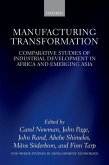- Gebundenes Buch
- Merkliste
- Auf die Merkliste
- Bewerten Bewerten
- Teilen
- Produkt teilen
- Produkterinnerung
- Produkterinnerung
Kathryn C. Ibata-Arens is Vincent de Paul Professor of Political Science and Director of the Global Asian Studies Program at DePaul University. She is the author of Innovation and Entrepreneurship in Japan: Politics, Organizations, and High Technology Firms.
Andere Kunden interessierten sich auch für
![Market Menagerie Market Menagerie]() Smita SrinivasMarket Menagerie90,99 €
Smita SrinivasMarket Menagerie90,99 €![A Shot to Save the World: The Inside Story of the Life-Or-Death Race for a Covid-19 Vaccine A Shot to Save the World: The Inside Story of the Life-Or-Death Race for a Covid-19 Vaccine]() Gregory ZuckermanA Shot to Save the World: The Inside Story of the Life-Or-Death Race for a Covid-19 Vaccine25,99 €
Gregory ZuckermanA Shot to Save the World: The Inside Story of the Life-Or-Death Race for a Covid-19 Vaccine25,99 €![For Blood and Money For Blood and Money]() Nathan VardiFor Blood and Money25,99 €
Nathan VardiFor Blood and Money25,99 €![Owning the Sun: A People's History of Monopoly Medicine from Aspirin to Covid-19 Vaccines Owning the Sun: A People's History of Monopoly Medicine from Aspirin to Covid-19 Vaccines]() Alexander ZaitchikOwning the Sun: A People's History of Monopoly Medicine from Aspirin to Covid-19 Vaccines22,99 €
Alexander ZaitchikOwning the Sun: A People's History of Monopoly Medicine from Aspirin to Covid-19 Vaccines22,99 €![Phytochemical Profiling of Commercially Important South African Plants Phytochemical Profiling of Commercially Important South African Plants]() Alvaro ViljoenPhytochemical Profiling of Commercially Important South African Plants122,99 €
Alvaro ViljoenPhytochemical Profiling of Commercially Important South African Plants122,99 €![Novartis: How a Leader in Healthcare Was Created Out of Ciba, Geigy and Sandoz Novartis: How a Leader in Healthcare Was Created Out of Ciba, Geigy and Sandoz]() NovartisNovartis: How a Leader in Healthcare Was Created Out of Ciba, Geigy and Sandoz38,99 €
NovartisNovartis: How a Leader in Healthcare Was Created Out of Ciba, Geigy and Sandoz38,99 €![Manufacturing Transformation Manufacturing Transformation]() Carol NewmanManufacturing Transformation141,99 €
Carol NewmanManufacturing Transformation141,99 €-
-
-
Kathryn C. Ibata-Arens is Vincent de Paul Professor of Political Science and Director of the Global Asian Studies Program at DePaul University. She is the author of Innovation and Entrepreneurship in Japan: Politics, Organizations, and High Technology Firms.
Produktdetails
- Produktdetails
- Verlag: Stanford University Press
- Seitenzahl: 352
- Erscheinungstermin: 16. April 2019
- Englisch
- Abmessung: 159mm x 234mm x 28mm
- Gewicht: 630g
- ISBN-13: 9781503605473
- ISBN-10: 1503605477
- Artikelnr.: 53544182
- Verlag: Stanford University Press
- Seitenzahl: 352
- Erscheinungstermin: 16. April 2019
- Englisch
- Abmessung: 159mm x 234mm x 28mm
- Gewicht: 630g
- ISBN-13: 9781503605473
- ISBN-10: 1503605477
- Artikelnr.: 53544182
Kathryn C. Ibata-Arens is Vincent de Paul Professor of Political Science and Director of the Global Asian Studies Program at DePaul University. She is the author of Innovation and Entrepreneurship in Japan: Politics, Organizations, and High Technology Firms.
Contents and Abstracts
1Introduction
chapter abstract
The book discusses the importance of global competition in biomedical and
new-technology sectors to understanding international trade and investment
in the twenty-first century. It argues that countries that pursue networked
technonationalism (NTN) have been the most effective in improving
innovation capacity and fostering frontier-industry growth.
Technonationalism is state-led strategic investment in new technologies,
perceived as key to national security. From the most closed system (Japan's
classic technonationalism) to the most open, or technoglobal system
(Singapore) technationalism exists on a continuum. A typology of knowledge
and network regimes is proposed to explain variations in domestic
capacities, institutions, and policy and network practices. Comparisons of
human capital development (STEM education), knowledge production
(scientific citations and patents), institutions supporting innovation
(technology licensing organizations, incubators), and interfirm networks
and international openness (inward foreign direct investment, engaging with
diaspora, and immigration) elucidate distinctions.
2Theory and Methods
chapter abstract
This chapter develops a matrix that plots variations in open/tacit versus
closed/codified system architectures supporting or limiting innovation
capacity and new-business creation in targeted sectors. Aggregate global-
and microlevel data are analyzed to identify concentrations of innovation
and firm-level activity. Emerging hubs of knowledge and firm creation in
biomedical industries, including biopharmaceuticals, are identified.
Aggregate data is supplemented with firm-level case studies and interviews
with entrepreneurs, government officials, incubation managers, and
investors. The conceptual framework outlined in Chapter 1 and specified in
Chapter 2 provides the lens through which innovation and entrepreneurship
strategies in China, India, Japan, and Singapore are viewed. The analysis
is supplemented with firm-level entrepreneurial case studies.
3Classic Technonationalism in Japan
chapter abstract
Japan's strengths in intellectual property production have since the 1990s
failed to translate into globally competitive new-product and new-business
creation. Insular institutions and business practices have created "sticky"
networks. These structures, while protecting weak industries from global
competition, have trapped nascent entrepreneurs and undermined
human-capital development. Yet Japan remains the largest market for
biomedical products and services in Asia. Its aging population is driving
ever-increasing health care consumption, while the shrinking size of its
working population means that growth must be based on productivity gains.
These demographics provide opportunities for foreign firms and investors to
enter Japan, potentially enriching Japanese networks in the future. The
Japanese state has encouraged international science and technology
collaborations since 2000, which has led to growth in international
copatenting, a potential first step to broader internationalization and
open networks.
4New Networked Technonationalism in China
chapter abstract
Features of China's networked technonationalism (NTN) include aggressive
science, technology, engineering, and math (STEM) education and
entrepreneurship policies. Further, the biomedical industry has been
identified by political and economic leaders as a "strategic emerging
industry" and has become a focal point of state-led economic development.
In contrast to Japan's insular and closed ("sticky") domestic knowledge and
business networks, since the 1970s China's expatriate and diaspora returnee
communities and active inward FDI have contributed to evolving globally
competitive business networks. Over time, China used its growing domestic
market as a lure to foreign firms from which technology appropriation can
occur. However, China's population size and urban-rural disparities mean
that egalitarian redistribution of new wealth has not been guaranteed in
this system. Further, introduction of Western chemical pharmaceuticals
threaten traditional medicine and therapies.
5From Closed to Open in India
chapter abstract
Decades ago, led by the technonational rhetoric of self-reliance and
improvement in human health, India delayed opening its market.
Consequently, India spent decades on import substitution and other
exclusionary policies in a classic technonational system architecture like
Japan. Later, India invested in generic-drug research and development and
production capacity, complemented by advances in information technology.
State-led human-capital development-for example, in the semi-independent
Indian Institutes of Technologies (IITs)-targeted initially information
technology and more recently has focused on biomedicine. Expatriate and
diaspora returnee networks of Indian professionals, via its networked
technonational architecture, since the 1990s have contributed to the
development of innovative capacity and new ventures, but at a slower pace
than in China.
6Singapore
chapter abstract
Singapore's developmental model had to be based within its multiethnic
Chinese, Indian, and Malay population and from its very inception was
global in outlook. Its meritocratic Economic Development Board (EDB) and
Agency for Science, Technology and Research (A*STAR) tied inward FDI to
domestic human-capital development and redistribution of internationally
derived wealth to its domestic population. Its "guppies to whales"
human-capital development programs contributed to productivity gains
through attracting the region's best and brightest STEM youth and offering
them citizenship. While the Singaporean city-state's small population has
proven an impediment to establishing a critical mass of new technology
entrepreneurs, open immigration policies have the potential to fast-track
future developments. However, indigenous Singaporeans have been displaced
in this process.
7Conclusion
chapter abstract
Chapter 7 summarizes the key findings of the book, reflecting on the
framework of networked technonationalism and the conceptual typology of
knowledge and networks. It compares variations in networked
technonationalism as measured by variation in the knowledge and network
architecture and governance regimes in China, India, Japan, and Singapore.
The book concludes with theory and policy implications of networked
technonationalism for Asia and the world economy.
1Introduction
chapter abstract
The book discusses the importance of global competition in biomedical and
new-technology sectors to understanding international trade and investment
in the twenty-first century. It argues that countries that pursue networked
technonationalism (NTN) have been the most effective in improving
innovation capacity and fostering frontier-industry growth.
Technonationalism is state-led strategic investment in new technologies,
perceived as key to national security. From the most closed system (Japan's
classic technonationalism) to the most open, or technoglobal system
(Singapore) technationalism exists on a continuum. A typology of knowledge
and network regimes is proposed to explain variations in domestic
capacities, institutions, and policy and network practices. Comparisons of
human capital development (STEM education), knowledge production
(scientific citations and patents), institutions supporting innovation
(technology licensing organizations, incubators), and interfirm networks
and international openness (inward foreign direct investment, engaging with
diaspora, and immigration) elucidate distinctions.
2Theory and Methods
chapter abstract
This chapter develops a matrix that plots variations in open/tacit versus
closed/codified system architectures supporting or limiting innovation
capacity and new-business creation in targeted sectors. Aggregate global-
and microlevel data are analyzed to identify concentrations of innovation
and firm-level activity. Emerging hubs of knowledge and firm creation in
biomedical industries, including biopharmaceuticals, are identified.
Aggregate data is supplemented with firm-level case studies and interviews
with entrepreneurs, government officials, incubation managers, and
investors. The conceptual framework outlined in Chapter 1 and specified in
Chapter 2 provides the lens through which innovation and entrepreneurship
strategies in China, India, Japan, and Singapore are viewed. The analysis
is supplemented with firm-level entrepreneurial case studies.
3Classic Technonationalism in Japan
chapter abstract
Japan's strengths in intellectual property production have since the 1990s
failed to translate into globally competitive new-product and new-business
creation. Insular institutions and business practices have created "sticky"
networks. These structures, while protecting weak industries from global
competition, have trapped nascent entrepreneurs and undermined
human-capital development. Yet Japan remains the largest market for
biomedical products and services in Asia. Its aging population is driving
ever-increasing health care consumption, while the shrinking size of its
working population means that growth must be based on productivity gains.
These demographics provide opportunities for foreign firms and investors to
enter Japan, potentially enriching Japanese networks in the future. The
Japanese state has encouraged international science and technology
collaborations since 2000, which has led to growth in international
copatenting, a potential first step to broader internationalization and
open networks.
4New Networked Technonationalism in China
chapter abstract
Features of China's networked technonationalism (NTN) include aggressive
science, technology, engineering, and math (STEM) education and
entrepreneurship policies. Further, the biomedical industry has been
identified by political and economic leaders as a "strategic emerging
industry" and has become a focal point of state-led economic development.
In contrast to Japan's insular and closed ("sticky") domestic knowledge and
business networks, since the 1970s China's expatriate and diaspora returnee
communities and active inward FDI have contributed to evolving globally
competitive business networks. Over time, China used its growing domestic
market as a lure to foreign firms from which technology appropriation can
occur. However, China's population size and urban-rural disparities mean
that egalitarian redistribution of new wealth has not been guaranteed in
this system. Further, introduction of Western chemical pharmaceuticals
threaten traditional medicine and therapies.
5From Closed to Open in India
chapter abstract
Decades ago, led by the technonational rhetoric of self-reliance and
improvement in human health, India delayed opening its market.
Consequently, India spent decades on import substitution and other
exclusionary policies in a classic technonational system architecture like
Japan. Later, India invested in generic-drug research and development and
production capacity, complemented by advances in information technology.
State-led human-capital development-for example, in the semi-independent
Indian Institutes of Technologies (IITs)-targeted initially information
technology and more recently has focused on biomedicine. Expatriate and
diaspora returnee networks of Indian professionals, via its networked
technonational architecture, since the 1990s have contributed to the
development of innovative capacity and new ventures, but at a slower pace
than in China.
6Singapore
chapter abstract
Singapore's developmental model had to be based within its multiethnic
Chinese, Indian, and Malay population and from its very inception was
global in outlook. Its meritocratic Economic Development Board (EDB) and
Agency for Science, Technology and Research (A*STAR) tied inward FDI to
domestic human-capital development and redistribution of internationally
derived wealth to its domestic population. Its "guppies to whales"
human-capital development programs contributed to productivity gains
through attracting the region's best and brightest STEM youth and offering
them citizenship. While the Singaporean city-state's small population has
proven an impediment to establishing a critical mass of new technology
entrepreneurs, open immigration policies have the potential to fast-track
future developments. However, indigenous Singaporeans have been displaced
in this process.
7Conclusion
chapter abstract
Chapter 7 summarizes the key findings of the book, reflecting on the
framework of networked technonationalism and the conceptual typology of
knowledge and networks. It compares variations in networked
technonationalism as measured by variation in the knowledge and network
architecture and governance regimes in China, India, Japan, and Singapore.
The book concludes with theory and policy implications of networked
technonationalism for Asia and the world economy.
Contents and Abstracts
1Introduction
chapter abstract
The book discusses the importance of global competition in biomedical and
new-technology sectors to understanding international trade and investment
in the twenty-first century. It argues that countries that pursue networked
technonationalism (NTN) have been the most effective in improving
innovation capacity and fostering frontier-industry growth.
Technonationalism is state-led strategic investment in new technologies,
perceived as key to national security. From the most closed system (Japan's
classic technonationalism) to the most open, or technoglobal system
(Singapore) technationalism exists on a continuum. A typology of knowledge
and network regimes is proposed to explain variations in domestic
capacities, institutions, and policy and network practices. Comparisons of
human capital development (STEM education), knowledge production
(scientific citations and patents), institutions supporting innovation
(technology licensing organizations, incubators), and interfirm networks
and international openness (inward foreign direct investment, engaging with
diaspora, and immigration) elucidate distinctions.
2Theory and Methods
chapter abstract
This chapter develops a matrix that plots variations in open/tacit versus
closed/codified system architectures supporting or limiting innovation
capacity and new-business creation in targeted sectors. Aggregate global-
and microlevel data are analyzed to identify concentrations of innovation
and firm-level activity. Emerging hubs of knowledge and firm creation in
biomedical industries, including biopharmaceuticals, are identified.
Aggregate data is supplemented with firm-level case studies and interviews
with entrepreneurs, government officials, incubation managers, and
investors. The conceptual framework outlined in Chapter 1 and specified in
Chapter 2 provides the lens through which innovation and entrepreneurship
strategies in China, India, Japan, and Singapore are viewed. The analysis
is supplemented with firm-level entrepreneurial case studies.
3Classic Technonationalism in Japan
chapter abstract
Japan's strengths in intellectual property production have since the 1990s
failed to translate into globally competitive new-product and new-business
creation. Insular institutions and business practices have created "sticky"
networks. These structures, while protecting weak industries from global
competition, have trapped nascent entrepreneurs and undermined
human-capital development. Yet Japan remains the largest market for
biomedical products and services in Asia. Its aging population is driving
ever-increasing health care consumption, while the shrinking size of its
working population means that growth must be based on productivity gains.
These demographics provide opportunities for foreign firms and investors to
enter Japan, potentially enriching Japanese networks in the future. The
Japanese state has encouraged international science and technology
collaborations since 2000, which has led to growth in international
copatenting, a potential first step to broader internationalization and
open networks.
4New Networked Technonationalism in China
chapter abstract
Features of China's networked technonationalism (NTN) include aggressive
science, technology, engineering, and math (STEM) education and
entrepreneurship policies. Further, the biomedical industry has been
identified by political and economic leaders as a "strategic emerging
industry" and has become a focal point of state-led economic development.
In contrast to Japan's insular and closed ("sticky") domestic knowledge and
business networks, since the 1970s China's expatriate and diaspora returnee
communities and active inward FDI have contributed to evolving globally
competitive business networks. Over time, China used its growing domestic
market as a lure to foreign firms from which technology appropriation can
occur. However, China's population size and urban-rural disparities mean
that egalitarian redistribution of new wealth has not been guaranteed in
this system. Further, introduction of Western chemical pharmaceuticals
threaten traditional medicine and therapies.
5From Closed to Open in India
chapter abstract
Decades ago, led by the technonational rhetoric of self-reliance and
improvement in human health, India delayed opening its market.
Consequently, India spent decades on import substitution and other
exclusionary policies in a classic technonational system architecture like
Japan. Later, India invested in generic-drug research and development and
production capacity, complemented by advances in information technology.
State-led human-capital development-for example, in the semi-independent
Indian Institutes of Technologies (IITs)-targeted initially information
technology and more recently has focused on biomedicine. Expatriate and
diaspora returnee networks of Indian professionals, via its networked
technonational architecture, since the 1990s have contributed to the
development of innovative capacity and new ventures, but at a slower pace
than in China.
6Singapore
chapter abstract
Singapore's developmental model had to be based within its multiethnic
Chinese, Indian, and Malay population and from its very inception was
global in outlook. Its meritocratic Economic Development Board (EDB) and
Agency for Science, Technology and Research (A*STAR) tied inward FDI to
domestic human-capital development and redistribution of internationally
derived wealth to its domestic population. Its "guppies to whales"
human-capital development programs contributed to productivity gains
through attracting the region's best and brightest STEM youth and offering
them citizenship. While the Singaporean city-state's small population has
proven an impediment to establishing a critical mass of new technology
entrepreneurs, open immigration policies have the potential to fast-track
future developments. However, indigenous Singaporeans have been displaced
in this process.
7Conclusion
chapter abstract
Chapter 7 summarizes the key findings of the book, reflecting on the
framework of networked technonationalism and the conceptual typology of
knowledge and networks. It compares variations in networked
technonationalism as measured by variation in the knowledge and network
architecture and governance regimes in China, India, Japan, and Singapore.
The book concludes with theory and policy implications of networked
technonationalism for Asia and the world economy.
1Introduction
chapter abstract
The book discusses the importance of global competition in biomedical and
new-technology sectors to understanding international trade and investment
in the twenty-first century. It argues that countries that pursue networked
technonationalism (NTN) have been the most effective in improving
innovation capacity and fostering frontier-industry growth.
Technonationalism is state-led strategic investment in new technologies,
perceived as key to national security. From the most closed system (Japan's
classic technonationalism) to the most open, or technoglobal system
(Singapore) technationalism exists on a continuum. A typology of knowledge
and network regimes is proposed to explain variations in domestic
capacities, institutions, and policy and network practices. Comparisons of
human capital development (STEM education), knowledge production
(scientific citations and patents), institutions supporting innovation
(technology licensing organizations, incubators), and interfirm networks
and international openness (inward foreign direct investment, engaging with
diaspora, and immigration) elucidate distinctions.
2Theory and Methods
chapter abstract
This chapter develops a matrix that plots variations in open/tacit versus
closed/codified system architectures supporting or limiting innovation
capacity and new-business creation in targeted sectors. Aggregate global-
and microlevel data are analyzed to identify concentrations of innovation
and firm-level activity. Emerging hubs of knowledge and firm creation in
biomedical industries, including biopharmaceuticals, are identified.
Aggregate data is supplemented with firm-level case studies and interviews
with entrepreneurs, government officials, incubation managers, and
investors. The conceptual framework outlined in Chapter 1 and specified in
Chapter 2 provides the lens through which innovation and entrepreneurship
strategies in China, India, Japan, and Singapore are viewed. The analysis
is supplemented with firm-level entrepreneurial case studies.
3Classic Technonationalism in Japan
chapter abstract
Japan's strengths in intellectual property production have since the 1990s
failed to translate into globally competitive new-product and new-business
creation. Insular institutions and business practices have created "sticky"
networks. These structures, while protecting weak industries from global
competition, have trapped nascent entrepreneurs and undermined
human-capital development. Yet Japan remains the largest market for
biomedical products and services in Asia. Its aging population is driving
ever-increasing health care consumption, while the shrinking size of its
working population means that growth must be based on productivity gains.
These demographics provide opportunities for foreign firms and investors to
enter Japan, potentially enriching Japanese networks in the future. The
Japanese state has encouraged international science and technology
collaborations since 2000, which has led to growth in international
copatenting, a potential first step to broader internationalization and
open networks.
4New Networked Technonationalism in China
chapter abstract
Features of China's networked technonationalism (NTN) include aggressive
science, technology, engineering, and math (STEM) education and
entrepreneurship policies. Further, the biomedical industry has been
identified by political and economic leaders as a "strategic emerging
industry" and has become a focal point of state-led economic development.
In contrast to Japan's insular and closed ("sticky") domestic knowledge and
business networks, since the 1970s China's expatriate and diaspora returnee
communities and active inward FDI have contributed to evolving globally
competitive business networks. Over time, China used its growing domestic
market as a lure to foreign firms from which technology appropriation can
occur. However, China's population size and urban-rural disparities mean
that egalitarian redistribution of new wealth has not been guaranteed in
this system. Further, introduction of Western chemical pharmaceuticals
threaten traditional medicine and therapies.
5From Closed to Open in India
chapter abstract
Decades ago, led by the technonational rhetoric of self-reliance and
improvement in human health, India delayed opening its market.
Consequently, India spent decades on import substitution and other
exclusionary policies in a classic technonational system architecture like
Japan. Later, India invested in generic-drug research and development and
production capacity, complemented by advances in information technology.
State-led human-capital development-for example, in the semi-independent
Indian Institutes of Technologies (IITs)-targeted initially information
technology and more recently has focused on biomedicine. Expatriate and
diaspora returnee networks of Indian professionals, via its networked
technonational architecture, since the 1990s have contributed to the
development of innovative capacity and new ventures, but at a slower pace
than in China.
6Singapore
chapter abstract
Singapore's developmental model had to be based within its multiethnic
Chinese, Indian, and Malay population and from its very inception was
global in outlook. Its meritocratic Economic Development Board (EDB) and
Agency for Science, Technology and Research (A*STAR) tied inward FDI to
domestic human-capital development and redistribution of internationally
derived wealth to its domestic population. Its "guppies to whales"
human-capital development programs contributed to productivity gains
through attracting the region's best and brightest STEM youth and offering
them citizenship. While the Singaporean city-state's small population has
proven an impediment to establishing a critical mass of new technology
entrepreneurs, open immigration policies have the potential to fast-track
future developments. However, indigenous Singaporeans have been displaced
in this process.
7Conclusion
chapter abstract
Chapter 7 summarizes the key findings of the book, reflecting on the
framework of networked technonationalism and the conceptual typology of
knowledge and networks. It compares variations in networked
technonationalism as measured by variation in the knowledge and network
architecture and governance regimes in China, India, Japan, and Singapore.
The book concludes with theory and policy implications of networked
technonationalism for Asia and the world economy.








